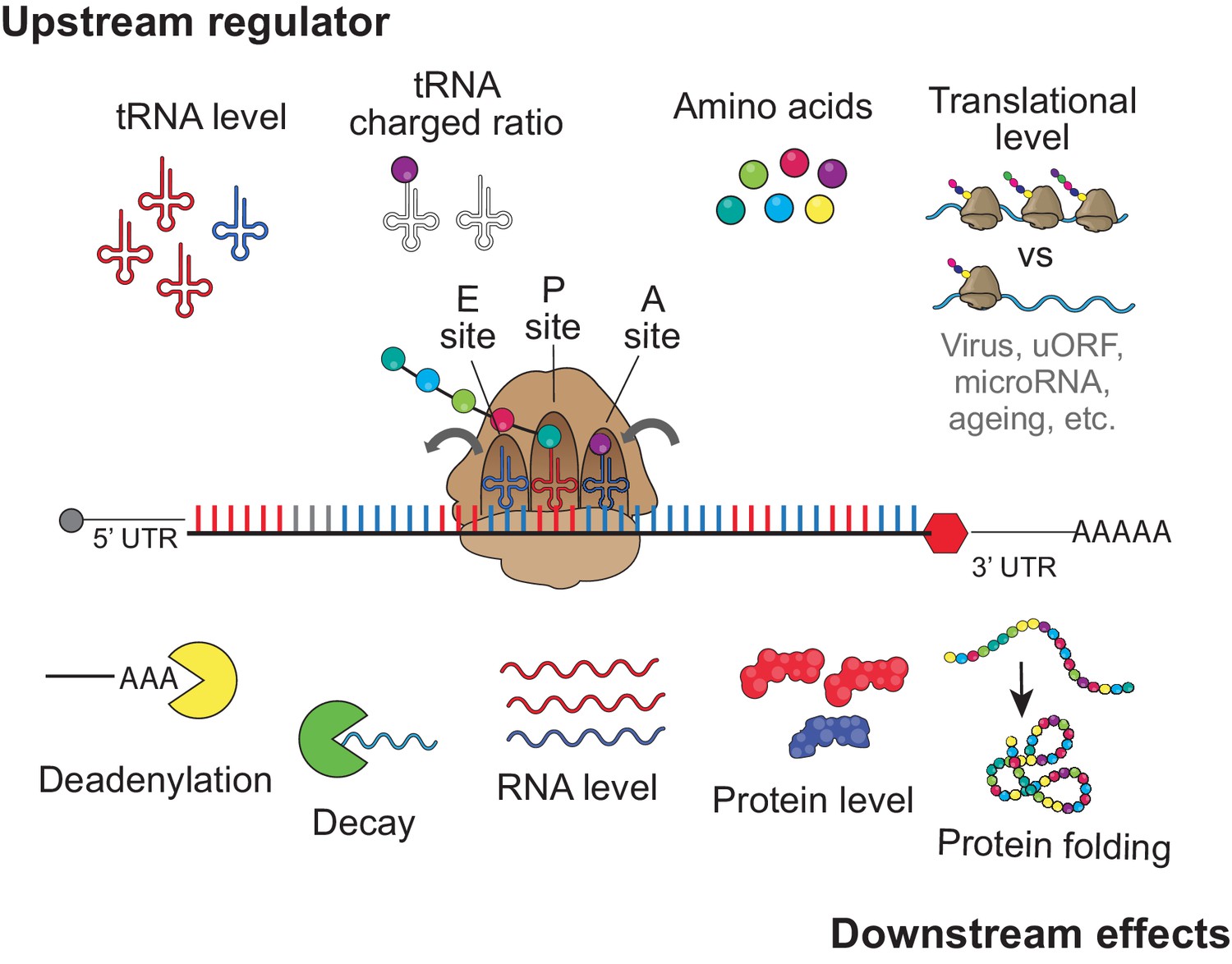
When it comes to understanding the intricacies of gene expression, mRNA stability plays a crucial role. mRNA, or messenger RNA, serves as the intermediary between DNA and protein synthesis, and its stability determines the lifespan and availability of vital genetic information. In recent years, researchers have delved deeper into the fascinating world of mRNA stability, unearthing remarkable insights and shedding light on its impact on various biological processes.
In this article, we will explore 13 intriguing facts about mRNA stability that showcase its importance in gene regulation and protein production. From the role of RNA-binding proteins to the influence of post-transcriptional modifications, these facts will not only deepen our understanding of cellular processes but also highlight the potential implications for therapeutic interventions and disease treatments.
Key Takeaways:
- mRNA stability controls how much protein our genes make, impacting our body’s functions. Factors like RNA-binding proteins and non-coding RNAs can influence mRNA stability, affecting our health and disease development.
- Understanding mRNA stability could lead to new treatments for diseases. By targeting mRNA stability, scientists hope to develop drugs that can selectively control gene expression, offering innovative therapies for various health conditions.
mRNA Stability Plays a Vital Role in Gene Regulation
mRNA stability refers to the lifespan of mRNA molecules within cells. It is a critical factor in controlling gene expression and plays a pivotal role in regulating various biological processes.
mRNA Stability Can Determine Gene Expression Levels
The stability of mRNA molecules influences the abundance of proteins produced from those genes. Instability can lead to rapid degradation of mRNA and subsequently reduce protein synthesis, while increased stability can enhance protein production.
Various Factors Impact mRNA Stability
Multiple factors contribute to mRNA stability, including the presence of specific motifs within the mRNA sequence, RNA-binding proteins, non-coding RNAs, and cellular signaling pathways. These factors can either promote or hinder mRNA stability.
AU-Rich Elements (AREs) Are Key Regulators of mRNA Stability
AREs are short sequences of adenine (A) and uracil (U) nucleotides found in the 3′ untranslated region (3’UTR) of mRNA molecules. They play a crucial role in determining mRNA stability by interacting with RNA-binding proteins.
The Degradation of mRNA is Primarily Carried Out by Exoribonucleases
Exoribonucleases are cellular enzymes responsible for degrading mRNA molecules. These enzymes progressively remove nucleotides from the 3′ end of the mRNA, leading to its eventual degradation.
RNA-Binding Proteins Help Regulate mRNA Stability
RNA-binding proteins can interact with specific sequences within mRNA molecules and influence their stability. These proteins can either promote mRNA degradation or protect it from degradation, depending on the context and cellular conditions.
Non-Coding RNAs Can Influence mRNA Stability
Non-coding RNAs, such as microRNAs and long non-coding RNAs (lncRNAs), can interact with mRNA molecules and affect their stability. These interactions can lead to either mRNA degradation or translational repression.
Cellular Stress Can Alter mRNA Stability
During cellular stress, such as exposure to environmental stressors or changes in cellular conditions, mRNA stability can be modulated. Certain stress-responsive signaling pathways can affect the stability of specific mRNAs, leading to adaptive cellular responses.
mRNA Stability is Linked to Disease Development
Alterations in mRNA stability have been implicated in various diseases, including cancer, neurodegenerative disorders, and autoimmune conditions. Dysregulation of mRNA stability can disrupt normal gene expression patterns, contributing to disease progression.
mRNA Stability Can Contribute to Drug Resistance
In some cases, alterations in mRNA stability can lead to acquired drug resistance in cancer cells. Changes in mRNA stability can impact the expression of drug targets, drug transporters, or proteins involved in cellular signaling pathways, reducing the effectiveness of therapy.
The Length of the Poly(A) Tail Influences mRNA Stability
The poly(A) tail, a chain of adenine nucleotides added to the 3′ end of mRNA, plays a role in mRNA stability. Shortening or lengthening of the poly(A) tail can affect mRNA stability and regulate gene expression levels.
mRNA Stability Can Be Regulated by Small Molecules
Small molecules, such as drugs or compounds found naturally in the cell, can modulate mRNA stability. These molecules can interact with specific mRNA sequences or RNA-binding proteins, altering the stability of target mRNAs.
mRNA Stability Research Opens Doors for Therapeutic Interventions
Understanding the mechanisms underlying mRNA stability has significant implications for therapeutic interventions. Targeting mRNA stability can offer new possibilities for the development of drugs to treat diseases by selectively modulating gene expression.
Conclusion
Understanding mRNA stability is crucial in unraveling the intricacies of gene expression and regulation. Through various mechanisms, cells finely tune the levels of mRNA to achieve proper protein synthesis and cellular functions. The stability of mRNA is influenced by a variety of factors including RNA binding proteins, cis-elements, and cellular signaling pathways. It plays a critical role in the control of gene expression, ranging from developmental processes to response to external stimuli.
Research in mRNA stability has provided fascinating insights into the dynamic nature of gene regulation. By studying the mechanisms involved in mRNA stability, scientists are gaining a deeper understanding of diseases and developing potential therapeutic interventions. The exploration of mRNA stability promises to unlock new avenues of research and shed light on the intricate workings of the cellular machinery in health and disease.
FAQs
Q: What is mRNA stability?
A: mRNA stability refers to the lifespan or duration of mRNA molecules within a cell before they are degraded. It is influenced by various factors such as RNA binding proteins, cis-elements, and cellular signaling pathways.
Q: Why is mRNA stability important?
A: mRNA stability plays a crucial role in controlling gene expression. By regulating the stability of mRNA, cells can control the levels of protein synthesis and ensure proper cellular functions.
Q: How is mRNA stability regulated?
A: mRNA stability is regulated through a complex interplay of RNA binding proteins and cis-elements present within the mRNA molecules. Additionally, cellular signaling pathways can also influence mRNA stability by modulating the activity of RNA degradation machinery.
Q: What happens when mRNA is unstable?
A: When mRNA is unstable, it is more likely to be degraded before it can be translated into protein. This can result in reduced protein synthesis and potentially lead to altered cellular functions or disease states.
Q: Can mRNA stability be manipulated?
A: Yes, mRNA stability can be manipulated to alter gene expression patterns. Researchers are exploring various strategies such as the use of RNA binding proteins or small molecules to modulate mRNA stability for therapeutic purposes.
Unraveling the mysteries of mRNA stability is just the beginning of our fascinating journey into the world of gene regulation. Dive deeper into this captivating realm by exploring the intriguing role of polyadenylation in shaping the fate of mRNA molecules. From the intricate interplay of factors governing mRNA stability to the cutting-edge research paving the way for groundbreaking therapeutic interventions, there's always more to discover in this ever-evolving field. So, keep your curiosity piqued and your mind open as we continue to unravel the secrets of life's molecular machinery.
Was this page helpful?
Our commitment to delivering trustworthy and engaging content is at the heart of what we do. Each fact on our site is contributed by real users like you, bringing a wealth of diverse insights and information. To ensure the highest standards of accuracy and reliability, our dedicated editors meticulously review each submission. This process guarantees that the facts we share are not only fascinating but also credible. Trust in our commitment to quality and authenticity as you explore and learn with us.


